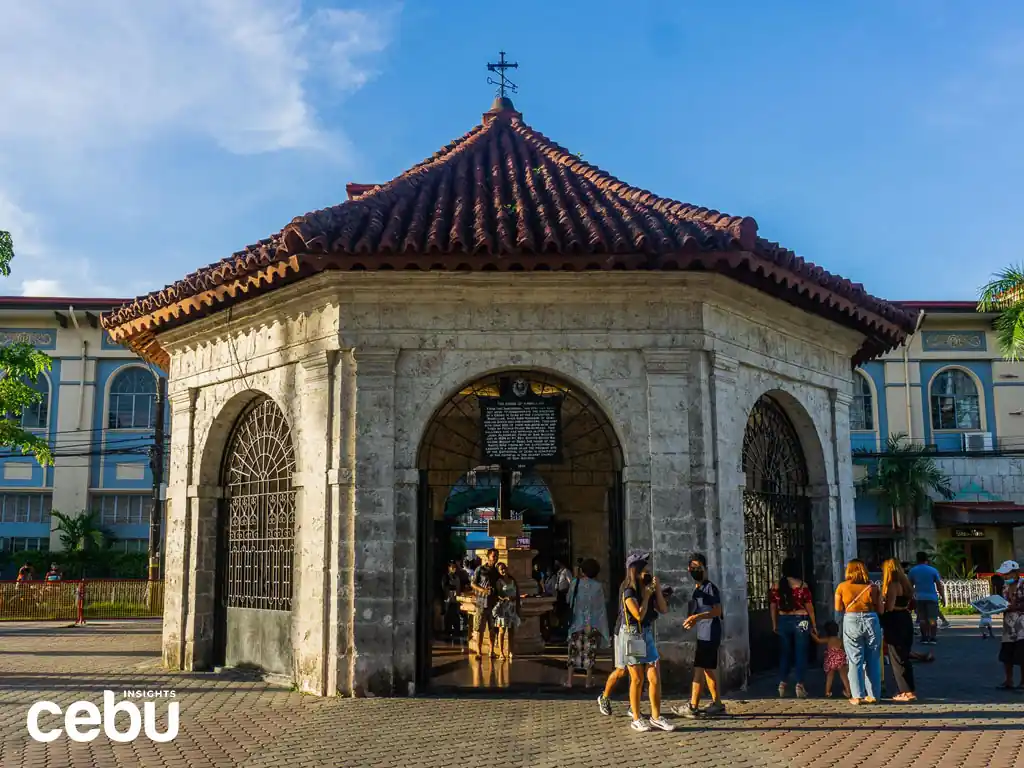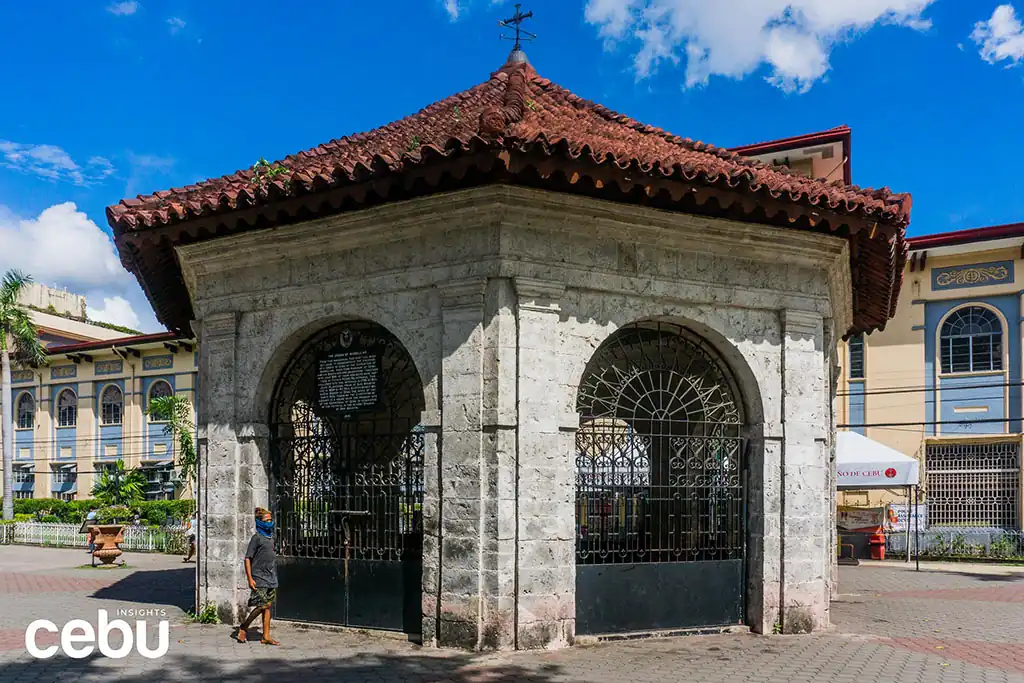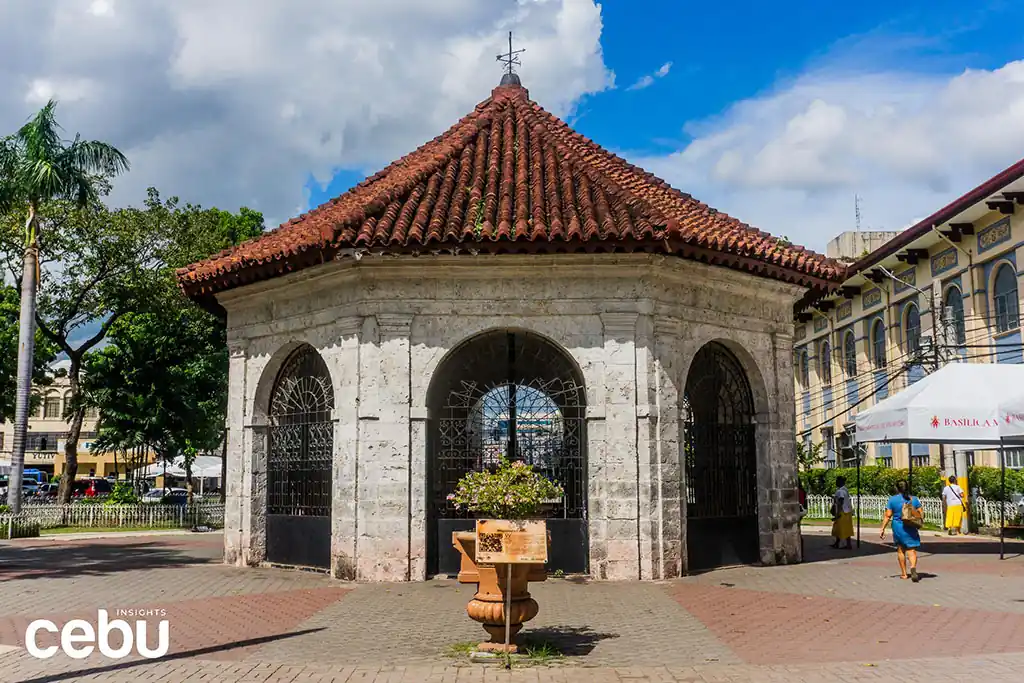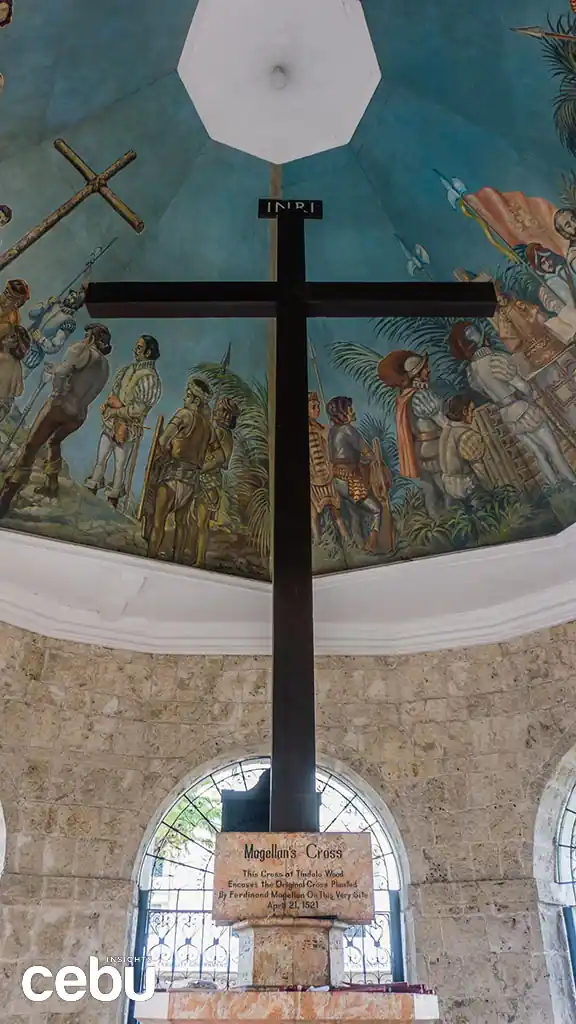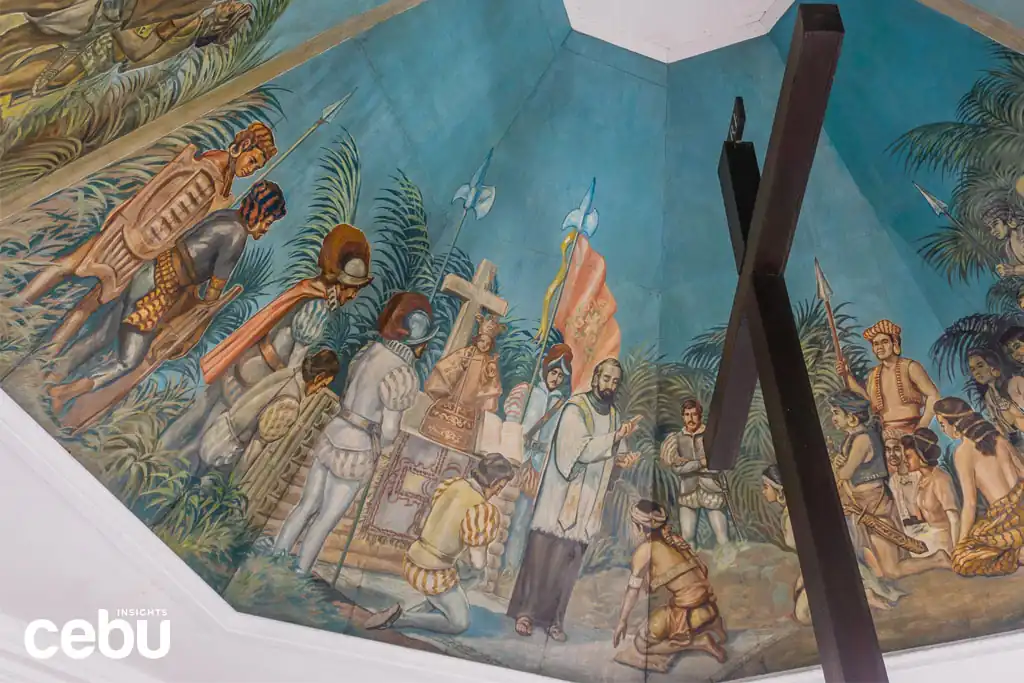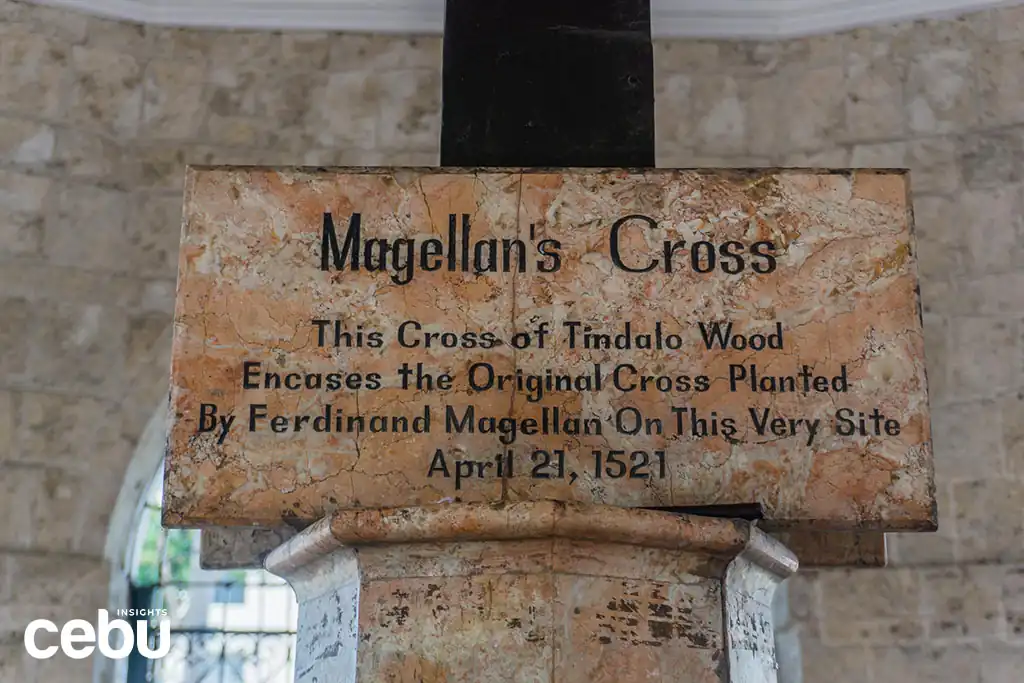Magellan’s Cross is a reminder of how Christianity was brought to the Philippines.
Christianity in the Philippines started in the 1500s when Spanish forces led by Ferdinand Magellan converted Rajah Humabon and his men. Magellan planted a large wooden cross on the first baptism site, which has become a notable symbol in Philippine history.
The cross is a must-see monument, as it is one of the most iconic historical landmarks in Cebu City.
The cross is one of the most recognizable monuments in Cebu. Hundreds of locals and tourists visit this heritage site to pray or to witness the religious icon for themselves. Visitors can also learn about how Christianity started in what is considered the largest Christian community in Asia.
The kiosk housing the cross is located between two other notable structures in Cebu City – namely City Hall and the Basilica del Sto. Niño.
It remains an important historical landmark, with several marketing and promotional materials using its iconic stone kiosk as a symbol that represents Cebu.
Even foreigners and locals from neighboring cities take the time to marvel at the monument, not to mention the murals painted in the ceiling within the kiosk.
HISTORY OF MAGELLAN’S CROSS
Magellan and his men arrived on the island of Cebu on March 15, 1521, looking to expand Christianity to other parts of the world. He persuaded Rajah Humabon and Queen Juana to convert into the first Christian Filipinos.
Fr. Pedro Valderama – the only priest to join Magellan in his expedition to the Philippines – led the first Christian baptism in Cebu on April 21, 1521, converting Humabon, Juana, and around 400 of their followers to Christianity.
Magellan planted a wooden cross in the venue where the baptism took place, and it still stands tall as of this day.
From 1525 to 1740, the Augustinian priests built a shrine for locals to come and witness the prominent structure. Unfortunately, many locals tried to chip away at pieces of the cross, believing it had miraculous power.
The church proceeded to build the chapel – occasionally referred to as a kiosk – to protect the shrine from massive damage. Even after countless typhoons and storms, the stone structure remains unharmed.
The signage shows that the original Magellan’s Cross is now encased in a hollow cross made of tindalo wood.
The local government stored the cross in a hollow timer casing, which is more difficult to chip away at.
A mural painted on the chapel ceiling depicts the first baptism in Cebu. The painting shows Fr. Valderama, Magellan, and the Spaniards, offering religious items to the early Cebuanos.
Unfortunately, Magellan met his untimely demise when he entered the island of Mactan, where he was defeated by Datu LapuLapu. The heavily armed Spanish forces fell to the local tribesmen of the island in what is famously referred to as the Battle of Mactan.
MAGELLAN’S CROSS TODAY
Cebuanos continue to visit Magellan’s Cross to pray and pay their respects.
The structure remains a popular tourist attraction, as it is an important aspect of religion in the Philippines, which is largely Catholic.
Many Cebuanos often visit the cross to offer prayers and ask for blessings. You can light some candles or pray outside the kiosk. There are also a few women outside the chapel selling candles and will offer to pray for you.
Foreigners – especially those who are Catholic and Christian – also take interest in how Christianity spread throughout the different countries worldwide. As one of the most popular and recognizable religious landmarks, this is one location they would probably want to visit during their stay in Cebu.
It may also be the perfect place to visit before making your way to the Basilica del Sto. Niño, the church where the original Santo Niño statue is housed and protected. It is also where the Fiesta Señor, the celebration in honor of Santo Niño during the Sinulog Festival, is held.
The stone kiosk is accessible and can easily be located near downtown Cebu. Many public utility jeepneys pass by the area, and taxi drivers are familiar with it.
Introducing Christianity to the Filipinos is one of the most celebrated accomplishments of Ferdinand Magellan. The structure he planted at the heart of Cebu City has created a lasting impact on local believers and devout travelers around the world.
If there is one historical monument that people closely associate with Cebu, it will most likely be Magellan’s Cross. This historical site serves as a reminder of the first Filipinos who converted to Christianity.
The venue is easy to locate, very recognizable, and it provides a reliable source of information in regards to how the largest Christian community in Asia started out.
HOW TO GET THERE
Exact Location:
P. Burgos Street, Cebu City, Cebu
Entrance Fee:
None
- JEEPNEY
Many jeepney routes going to downtown Cebu can take you close to Magellan’s Cross. Look for a jeepney that will pass by Sto. Niño, and get off when you reach the church. You can find the historical structure between City Hall and the Basilica.

